Chairi Kiourt
Deep learning based black spot identification on Greek road networks
Jun 19, 2023



Abstract:Black spot identification, a spatiotemporal phenomenon, involves analyzing the geographical location and time-based occurrence of road accidents. Typically, this analysis examines specific locations on road networks during set time periods to pinpoint areas with a higher concentration of accidents, known as black spots. By evaluating these problem areas, researchers can uncover the underlying causes and reasons for increased collision rates, such as road design, traffic volume, driver behavior, weather, and infrastructure. However, challenges in identifying black spots include limited data availability, data quality, and assessing contributing factors. Additionally, evolving road design, infrastructure, and vehicle safety technology can affect black spot analysis and determination. This study focused on traffic accidents in Greek road networks to recognize black spots, utilizing data from police and government-issued car crash reports. The study produced a publicly available dataset called Black Spots of North Greece (BSNG) and a highly accurate identification method.
Semantic Image Segmentation with Deep Learning for Vine Leaf Phenotyping
Oct 24, 2022



Abstract:Plant phenotyping refers to a quantitative description of the plants properties, however in image-based phenotyping analysis, our focus is primarily on the plants anatomical, ontogenetical and physiological properties.This technique reinforced by the success of Deep Learning in the field of image based analysis is applicable to a wide range of research areas making high-throughput screens of plants possible, reducing the time and effort needed for phenotypic characterization.In this study, we use Deep Learning methods (supervised and unsupervised learning based approaches) to semantically segment grapevine leaves images in order to develop an automated object detection (through segmentation) system for leaf phenotyping which will yield information regarding their structure and function.In these directions we studied several deep learning approaches with promising results as well as we reported some future challenging tasks in the area of precision agriculture.Our work contributes to plant lifecycle monitoring through which dynamic traits such as growth and development can be captured and quantified, targeted intervention and selective application of agrochemicals and grapevine variety identification which are key prerequisites in sustainable agriculture.
Pulmonary embolism identification in computerized tomography pulmonary angiography scans with deep learning technologies in COVID-19 patients
May 28, 2021
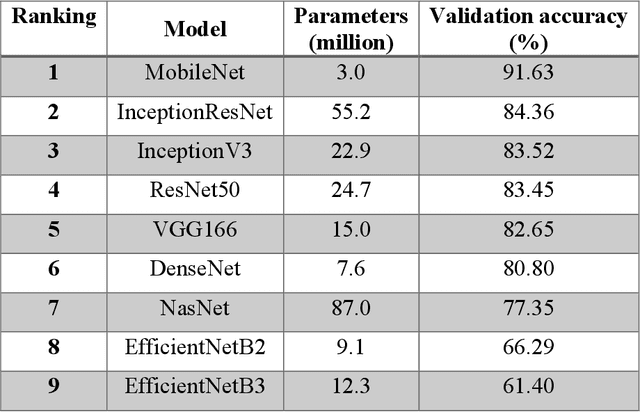
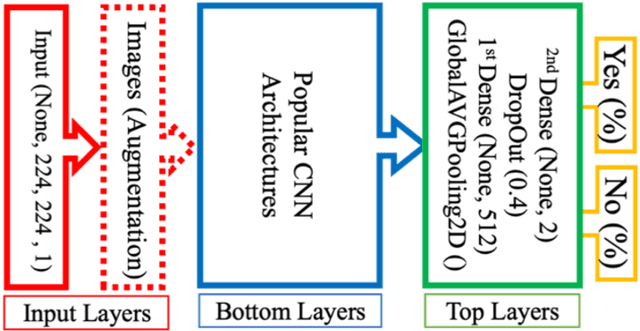
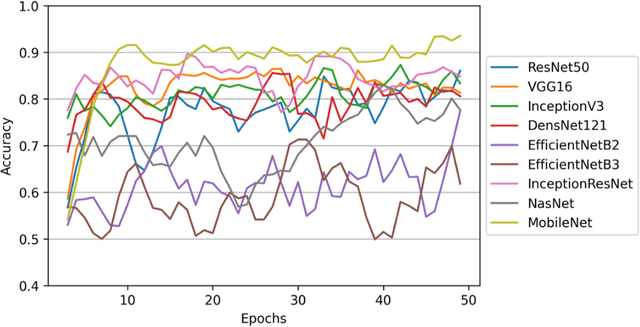
Abstract:The main objective of this work is to utilize state-of-the-art deep learning approaches for the identification of pulmonary embolism in CTPA-Scans for COVID-19 patients, provide an initial assessment of their performance and, ultimately, provide a fast-track prototype solution (system). We adopted and assessed some of the most popular convolutional neural network architectures through transfer learning approaches, to strive to combine good model accuracy with fast training. Additionally, we exploited one of the most popular one-stage object detection models for the localization (through object detection) of the pulmonary embolism regions-of-interests. The models of both approaches are trained on an original CTPA-Scan dataset, where we annotated of 673 CTPA-Scan images with 1,465 bounding boxes in total, highlighting pulmonary embolism regions-of-interests. We provide a brief assessment of some state-of-the-art image classification models by achieving validation accuracies of 91% in pulmonary embolism classification. Additionally, we achieved a precision of about 68% on average in the object detection model for the pulmonary embolism localization under 50% IoU threshold. For both approaches, we provide the entire training pipelines for future studies (step by step processes through source code). In this study, we present some of the most accurate and fast deep learning models for pulmonary embolism identification in CTPA-Scans images, through classification and localization (object detection) approaches for patients infected by COVID-19. We provide a fast-track solution (system) for the research community of the area, which combines both classification and object detection models for improving the precision of identifying pulmonary embolisms.
Deep learning approaches in food recognition
Apr 08, 2020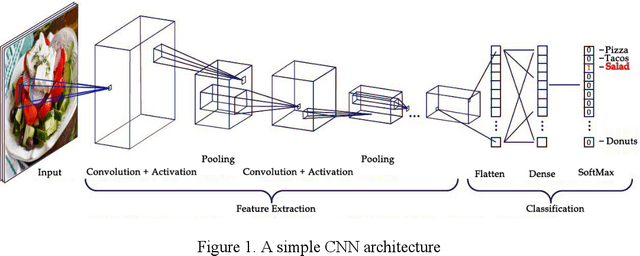



Abstract:Automatic image-based food recognition is a particularly challenging task. Traditional image analysis approaches have achieved low classification accuracy in the past, whereas deep learning approaches enabled the identification of food types and their ingredients. The contents of food dishes are typically deformable objects, usually including complex semantics, which makes the task of defining their structure very difficult. Deep learning methods have already shown very promising results in such challenges, so this chapter focuses on the presentation of some popular approaches and techniques applied in image-based food recognition. The three main lines of solutions, namely the design from scratch, the transfer learning and the platform-based approaches, are outlined, particularly for the task at hand, and are tested and compared to reveal the inherent strengths and weaknesses. The chapter is complemented with basic background material, a section devoted to the relevant datasets that are crucial in light of the empirical approaches adopted, and some concluding remarks that underline the future directions.
How game complexity affects the playing behavior of synthetic agents
Jul 07, 2018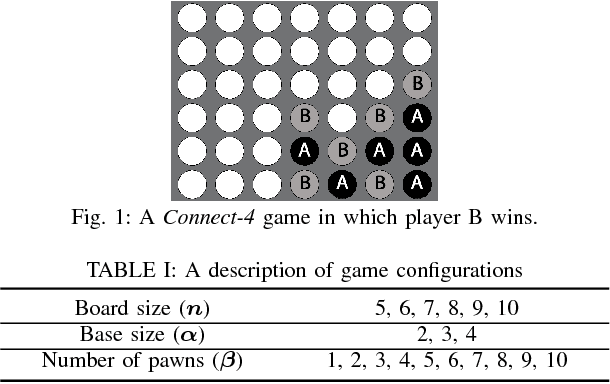

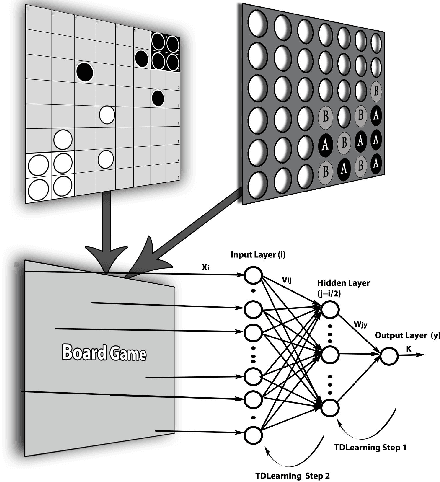
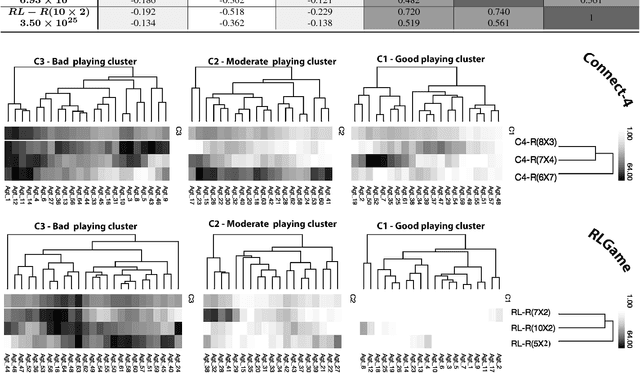
Abstract:Agent based simulation of social organizations, via the investigation of agents' training and learning tactics and strategies, has been inspired by the ability of humans to learn from social environments which are rich in agents, interactions and partial or hidden information. Such richness is a source of complexity that an effective learner has to be able to navigate. This paper focuses on the investigation of the impact of the environmental complexity on the game playing-and-learning behavior of synthetic agents. We demonstrate our approach using two independent turn-based zero-sum games as the basis of forming social events which are characterized both by competition and cooperation. The paper's key highlight is that as the complexity of a social environment changes, an effective player has to adapt its learning and playing profile to maintain a given performance profile
 Add to Chrome
Add to Chrome Add to Firefox
Add to Firefox Add to Edge
Add to Edge